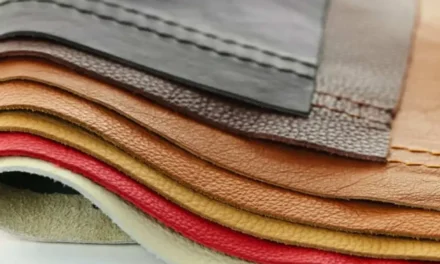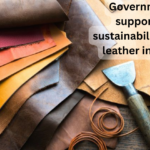Consumers play a crucial role in driving sustainability initiatives within the leather industry by influencing demand, setting trends, and encouraging brands to adopt more environmentally responsible and ethical practices. Here’s how consumers contribute to sustainability efforts:
1. Demand for Sustainable Products:
- Preference for Eco-Friendly Products: As consumers become more environmentally conscious, they increasingly prefer sustainable leather products made from ethically sourced materials and produced using eco-friendly processes. This demand pushes brands to offer products that align with consumer expectations for low environmental impact.
- Willingness to Pay a Premium: Many consumers are willing to pay more for leather goods that are sustainably produced or certified as eco-friendly. This trend encourages manufacturers to adopt sustainable practices, as they see financial incentive in meeting the growing demand for sustainable products.
2. Influencing Corporate Transparency:
- Demand for Transparency: Consumers are calling for more transparency about where and how products are made. This includes wanting to know about the sourcing of leather, production processes, and environmental impact of their purchases. In response, brands are increasingly providing supply chain transparency and adhering to sustainability certifications such as Fair Trade or the Leather Working Group certification.
3. Support for Circular Economy Models:
- Recycling and Upcycling: Consumers are helping to drive circular economy practices in the leather industry by supporting brands that engage in product take-back schemes, recycling programs, or offer upcycled leather products. By opting for goods made from recycled leather or participating in recycling initiatives, consumers encourage brands to adopt circular practices.
4. Support for Innovation in Leather Alternatives:
- Demand for Alternatives: Consumers are influencing the development of sustainable leather alternatives by showing interest in vegan leather, plant-based leathers, or lab-grown leather. As demand for these materials grows, manufacturers are investing more in research and development to produce alternatives that mimic the quality and durability of traditional leather without the environmental impact.
- Sustainable Innovation: Many consumers seek out innovative and eco-conscious materials like mushroom leather, pineapple leather (Piñatex), or apple leather. This trend encourages companies to explore and invest in sustainable, non-animal leather options.
5. Pressure on Brands for Sustainable Practices:
- Social Media and Activism: Through social media platforms, consumers are voicing their concerns and expectations regarding sustainability. Online activism, petitions, and social media campaigns can influence brands to adopt more sustainable and ethical practices. Brands are becoming more aware that failure to meet sustainability expectations can lead to public backlash and damage to their reputation.
- Customer Reviews and Feedback: Consumers provide valuable feedback through reviews, social media posts, and direct communications, which often push companies to improve their environmental and ethical practices. Brands are responding by incorporating sustainable practices to meet consumer expectations and maintain a positive image.
6. Educating and Influencing Others:
- Raising Awareness: Educated consumers who prioritize sustainability help spread awareness about the impact of leather production on the environment. By sharing knowledge and encouraging others to make more sustainable choices, these consumers amplify the demand for ethical leather goods.
- Influencer Support: Many consumers follow sustainability influencers who promote ethical consumption. These influencers often highlight brands and products that are leading the way in sustainable leather production, guiding their followers toward more eco-friendly purchasing decisions.
7. Choosing Longevity over Fast Fashion:
- Durable Products: Consumers are increasingly prioritizing quality over quantity and opting for leather goods that are made to last. Instead of purchasing fast fashion leather items that contribute to waste and pollution, consumers are choosing durable products that will stand the test of time. This reduces overall demand for mass-produced leather goods and encourages companies to focus on longevity and quality.
- Repair and Care: Some consumers also opt to repair their leather items rather than replace them. This emphasis on extending the lifetime of leather products contributes to a reduction in consumption and waste, aligning with sustainability goals.
8. Supporting Sustainable Leather Brands:
- Ethical Brands: Many consumers actively seek out and support brands that prioritize sustainable production, such as using vegetable-tanned leather, recycled leather, or animal-free leather. This support encourages more companies to adopt sustainable practices as they see growing consumer preference for these types of products.
- Certification Labels: Consumers are also looking for brands that display eco-labels and certifications that verify the sustainability of leather products. Labels like Global Organic Textile Standard (GOTS) or Leather Working Group (LWG) certification help consumers make informed purchasing decisions that align with their values.
9. Advocacy for Fair Trade and Ethical Labor:
- Labor Rights: Consumers are increasingly concerned about the working conditions and fair wages of workers in the leather industry. They are advocating for ethical labor practices and supporting brands that ensure their leather products are made under fair and humane working conditions.
- Support for Fair Trade: Consumers are seeking out Fair Trade certified leather goods, ensuring that the producers of leather items are compensated fairly, and their rights are protected. This drives demand for companies to adopt more responsible and humane sourcing practices.
By making informed choices, demanding transparency, and supporting ethical and sustainable brands, consumers are driving a significant shift in the leather industry toward more sustainable and ethical practices. Their actions, both as individual buyers and through collective activism, are encouraging companies to adopt responsible production methods that reduce environmental harm and promote better labor conditions.














